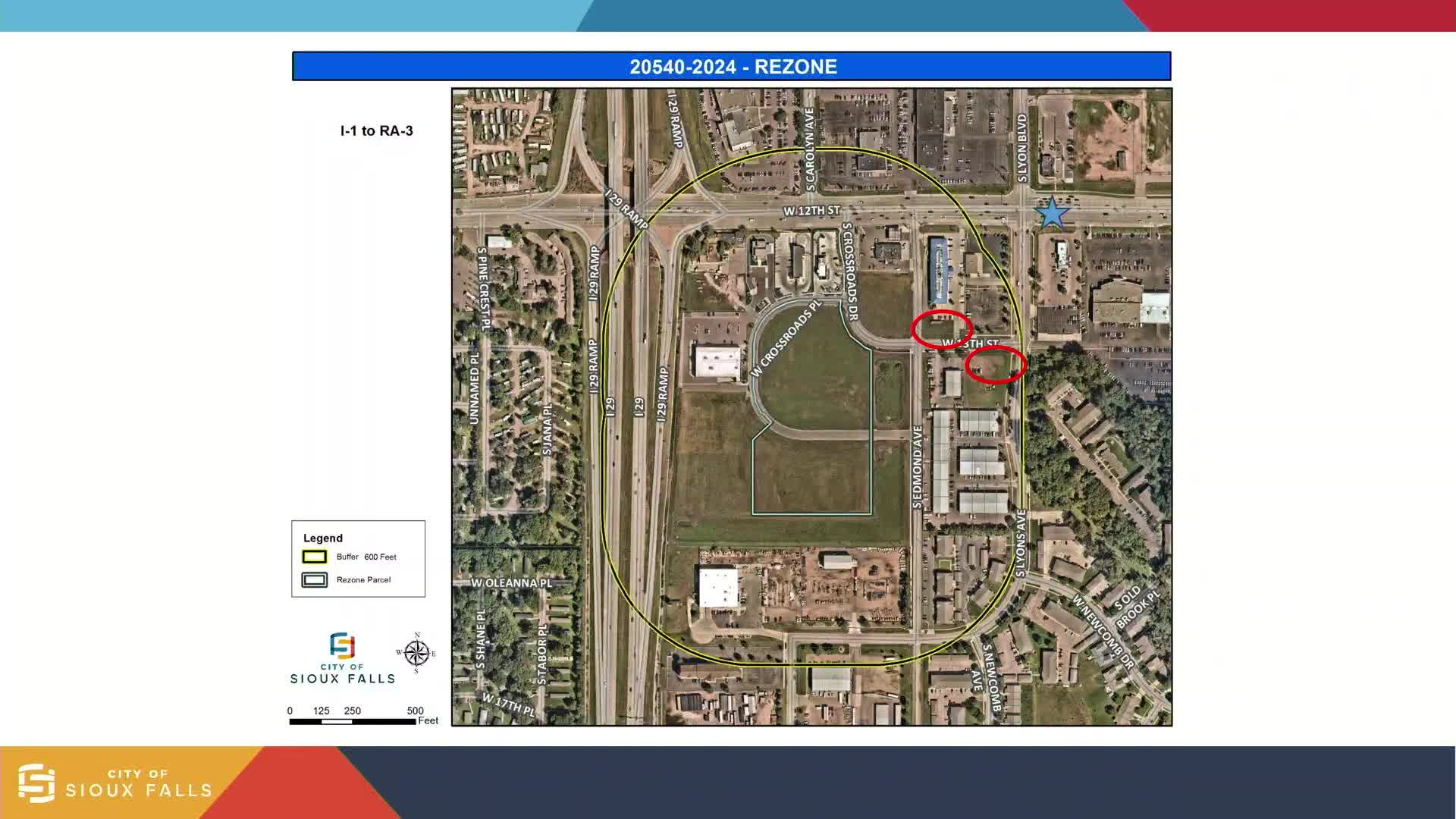Sioux Falls residents oppose high-density housing proposal at Newcomb Street
January 02, 2025 | Sioux Falls, Minnehaha County, South Dakota
This article was created by AI summarizing key points discussed. AI makes mistakes, so for full details and context, please refer to the video of the full meeting. Please report any errors so we can fix them. Report an error »

Sioux Falls Planning Commission has taken a significant step towards the development of a new multifamily housing project, with a rezone application for a site that could accommodate 345 units. The commission recommended approval of the rezone, which aligns with the city’s comprehensive plan for well-connected and accessible development. This marks the initial phase of the development process, with the City Council set to hold a first reading on January 21 and a second reading on February 3.
The project, presented by developer Radley McLaughlin, aims to provide convenient housing options for residents. However, it has faced considerable opposition from local residents concerned about the project's density and its implications for the community. Critics argue that the site is too small for the proposed number of units, particularly given that many will be larger three- and four-bedroom apartments. They also raised concerns about the concentration of low-income housing in the area, which already hosts multiple similar developments.
Residents voiced worries about inadequate parking, suggesting that reducing the parking requirement from two to 1.5 spaces per unit would not suffice, especially for families with multiple vehicles. Additionally, the lack of nearby amenities such as grocery stores and parks was highlighted, with opponents stressing the need for green spaces and recreational areas for future tenants.
Traffic flow was another major concern, with local business owners fearing that the high density of the proposed development would lead to increased congestion and complicate access for commercial vehicles. The potential impact on local infrastructure and the need for city support in managing traffic were also discussed.
As the Planning Commission moves forward with the recommendation, the upcoming City Council meetings will be crucial in determining the future of this multifamily housing project and its potential impact on the Sioux Falls community. The discussions reflect a broader conversation about balancing development needs with community concerns, a challenge that many growing cities face today.
The project, presented by developer Radley McLaughlin, aims to provide convenient housing options for residents. However, it has faced considerable opposition from local residents concerned about the project's density and its implications for the community. Critics argue that the site is too small for the proposed number of units, particularly given that many will be larger three- and four-bedroom apartments. They also raised concerns about the concentration of low-income housing in the area, which already hosts multiple similar developments.
Residents voiced worries about inadequate parking, suggesting that reducing the parking requirement from two to 1.5 spaces per unit would not suffice, especially for families with multiple vehicles. Additionally, the lack of nearby amenities such as grocery stores and parks was highlighted, with opponents stressing the need for green spaces and recreational areas for future tenants.
Traffic flow was another major concern, with local business owners fearing that the high density of the proposed development would lead to increased congestion and complicate access for commercial vehicles. The potential impact on local infrastructure and the need for city support in managing traffic were also discussed.
As the Planning Commission moves forward with the recommendation, the upcoming City Council meetings will be crucial in determining the future of this multifamily housing project and its potential impact on the Sioux Falls community. The discussions reflect a broader conversation about balancing development needs with community concerns, a challenge that many growing cities face today.
View full meeting
This article is based on a recent meeting—watch the full video and explore the complete transcript for deeper insights into the discussion.
View full meeting